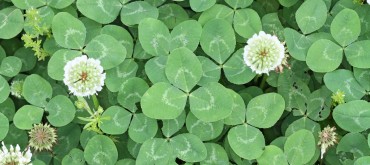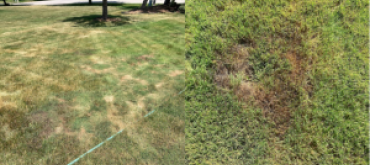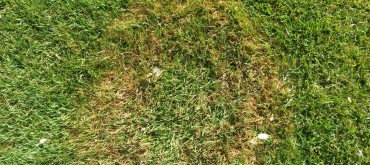Have you noticed your lawn starting to turn brown over the last couple of weeks? If so, there is usually no reason to panic yet, it’s probably starting to suffer from drought or heat stress. During the summer when higher temperatures are the norm, you should expect your lawn to naturally slowdown in growth during these elevated periods. Now, while you may let the lawn go completely dormant in hot weather, it is important to monitor conditions closely while this is happening, as the plants natural defence against injury or pest damage is greatly reduced. Many factors such as the soil, weather and temperature all have a role in the lawns water needs.
If your lawn goes completely dormant (turns brown and dries out), it is usually best not to try and revive it and just leave it in that condition, until favorable cooler weather returns. The reason being, if you break dormancy and get your grass back into its green state, it will start using its reserves. If this happens and weather conditions do not improve, it is unlikely that your turf will replace those reserves and will struggle to come out of dormancy when the weather cools. For this reason, monitoring your turf is very important and using various turf management practices is crucial.
In general, turf grasses need about ¾” - 1” of water per week to maintain a green color and active growth, but, during a period of dormancy you can water once every two weeks which will be enough to maintain moisture in the grass roots to keep your turf alive. A regular fertilization schedule will ensure your soil has the proper nutrients to stay green for longer and reduce its dormancy period. Proper mowing is also very important, you should never cut more than 1/3 of the grass blade off at any time to avoid shocking the grass plant. Keep your lawn around 3” long to make sure your grass doesn’t start using its food reserves, which will impact how quickly it goes dormant. Minimizing foot traffic during a time of dormancy will also help your turf bounce back quicker when the time comes. Again, if you choose to let your lawn go dormant it is important to still pay close attention to your lawn to avoid any pest problems that your lawn can’t defend against, like chinch bugs or certain warm weather turf diseases. Lawns that have poor grass roots or thatch issues will go dormant faster, so make sure to take note of problem areas that need to be looked at once your grass becomes active again.
So while we enjoy the warmer, dry weather, cool season plants like the ones in your lawn do not fare as well, so while it is not advised during these extremes to try and keep our lawn lush and green, it is important to keep it healthy. If you would like further information regarding extreme drought and heat please feel free to contact our office and a turf specialist would be happy to assist you.
Not currently fertilizing on a regular basis? This could be aggrvating the problem. Visit our lawn care page here to recieve your estimate today.





